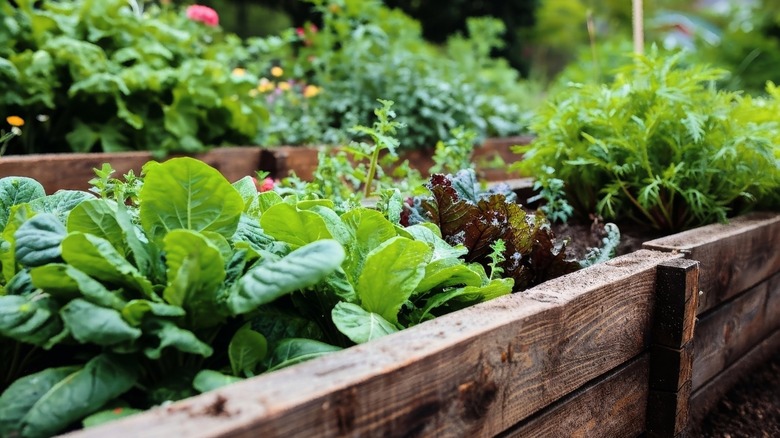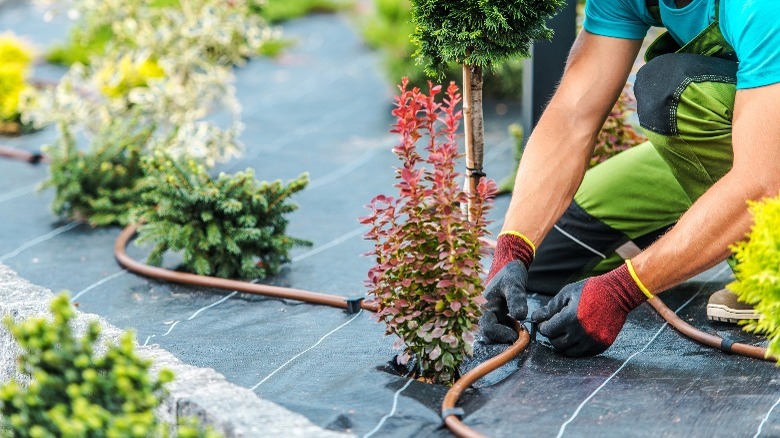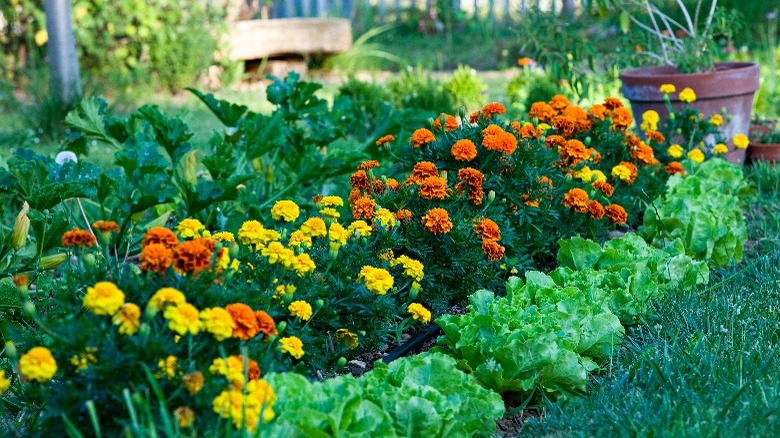This Watering Technique Can Save You Money And Promote Healthy Plant Growth
Keeping your garden beds well-watered (especially during hot or dry weather) might feel impossible if you stick to traditional hand-watering methods. There are also common mistakes to avoid when watering your garden that can harm it, like not focusing on the roots, or using a garden hose with a nozzle that's too strong. What if there was a watering technique that could save you both time and money, all while keeping your plants healthy? Tiffany Selvey, our Master Gardener, spoke with House Digest exclusively about drip irrigation, a simple method for watering your plants with some great benefits.
She highlights that the name of the method is a good descriptor: Water is slowly added to raised beds, containers, and in-ground gardens "instead of flooding it all at once." In fact, our expert shares that she uses this technique in her own garden to conserve water, save money, and avoid fungal diseases. To get started with drip irrigation, Selvey says many big-box stores and garden centers have drip tape or hoses that are easy to assemble, even if you are new to gardening.
Benefits of installing drip irrigation
One of the main reasons to install drip irrigation is to help your budget. In an exclusive interview with House Digest, Tiffany Selvey explained that while there are initial costs of installing the equipment for standard drip irrigation, she notes "that money will be returned quickly in savings on your water bill." In fact, drip irrigation uses up to 80% less water. She also mentions how a savvy gardener on a budget can use "an old hose with holes drilled into it" or make a system "out of PVC pipes and plumbing fixtures."
Selvey points out other advantages of drip irrigation, especially compared to different watering methods. She says that more water is absorbed into the soil "rather than being lost to evaporation compared to overhead sprinklers or hose-end sprayers." She also highlights how much easier it is to control the amount of water "to ensure you aren't watering too much or too little" using a handy timer.
Our expert did reveal one main disadvantage to drip irrigation, however. With this technique, you will have hoses and connectors that "can sometimes get in the way while you're gardening" and look "a little unsightly in planters." It might be a good idea to plan out where you will place hoses or figure out the best irrigation systems for flower beds.
A watering technique to grow healthier plants
Drip irrigation supports healthier plant growth. Speaking exclusively to House Digest, Selvey explained how this watering method "allows water to sink deeper into the soil, supporting a plant's root system." Not as much water is lost to evaporation as with other methods that require watering from above.
Selvey also talked about how drip irrigation prevents the spread of blight and powdery mildew, unlike sprinklers that can sometimes cause more harm than good to your plants. Plus, she notes that "because the leaves aren't getting wet, the spread of fungal issues like blight and powdery mildew are minimized." That means that when you use drip irrigation, you can avoid the growth and spread of pathogens that can negatively impact your plants.
When it comes to drip irrigation, Selvey believes it can be a great choice for many gardeners. However, she does specify that "each situation is different." "Ultimately," according to Selvey, "the best way to water plants is whatever is easiest and most accessible to the individual."


